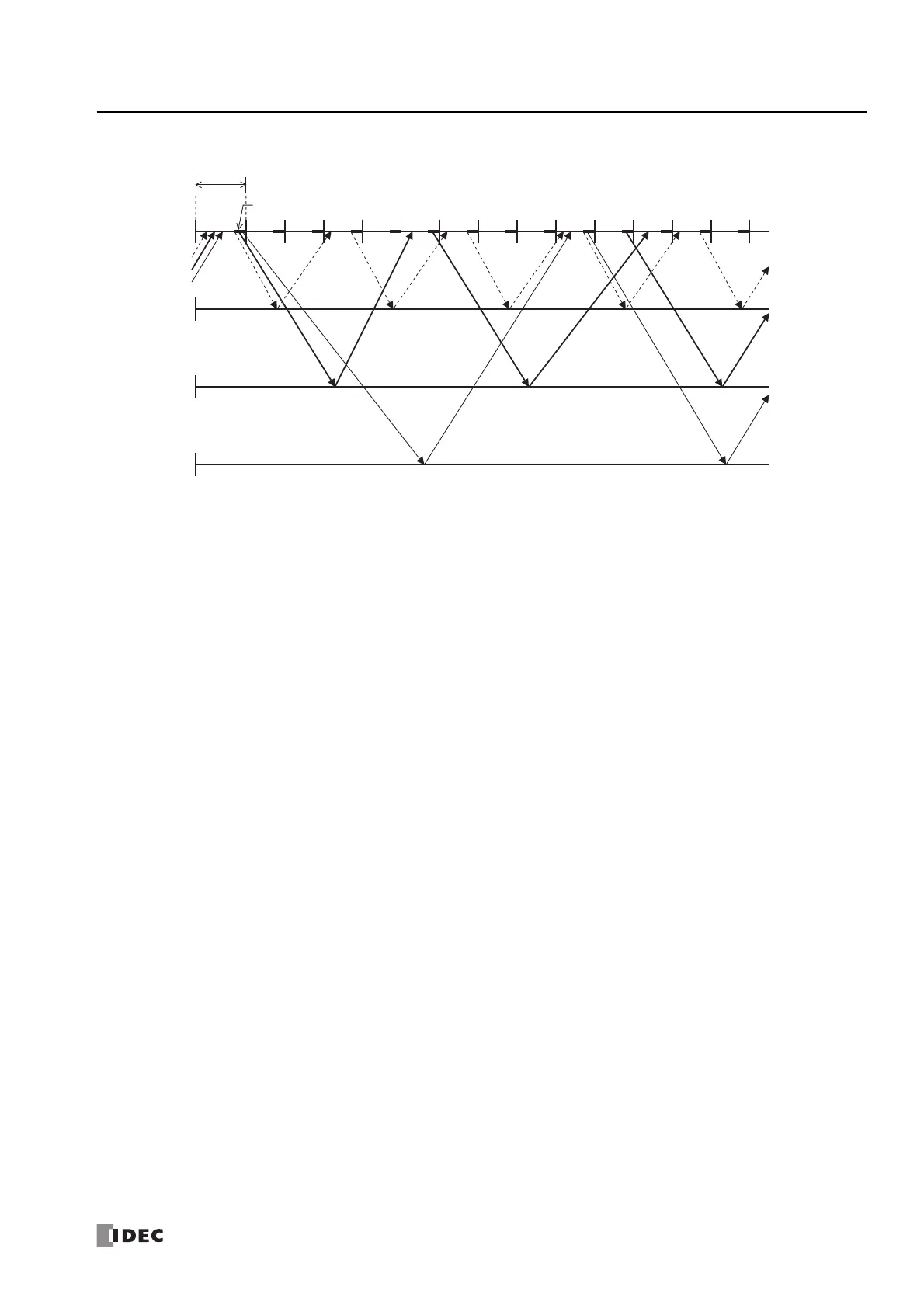S
MART
AXIS P
RO
/L
ITE
U
SER
'
S
M
ANUAL
FT9Y-B1378 12-5
12: R
EMOTE
I/O
Communication with Multiple Remote I/O Slaves
The above timing chart is an example where the communication with remote I/O slave 1 is the fastest and the communication with
remote I/O slave 3 is the slowest.
Note: Remote Communication Speed
The communication speed in remote I/O communication is affected by such factors as the state of the network line and the communication cable.
As a reference for communication speed, when performing remote I/O communication using a 100BASE-T compatible cable and switching hub, it
takes a minimum of approximately 5 ms after the remote I/O master issues a request until the response from the remote I/O slave is reflected as
inputs.
1. The remote I/O master is able to perform remote I/O communication in END processing and it simultaneously issues requests
to all remote I/O slaves.
2. The time until the response is returned is affected by the state of the network connecting the remote I/O slaves. Therefore,
new requests are only issued for remote I/O slaves that have returned a response.
3. When multiple responses are received in one scan, new requests are issued for all of those simultaneously in END processing.
Remote I/O
master
Remote I/O
slave 1
1. 2. 3.
Remote I/O
slave 2
Remote I/O
slave 3
END processing
One scan

